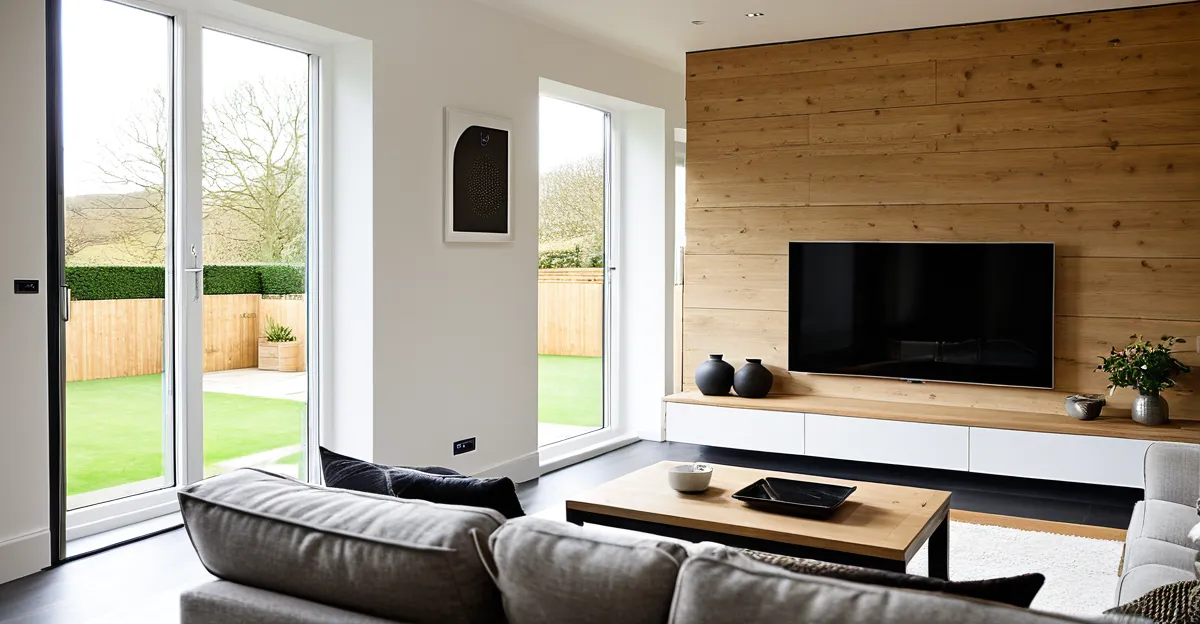Quick and Effective Ways to Improve Home Energy Efficiency
_
Simple actions often lead to noticeable results. To start with, conducting a quick audit of your home’s energy use reveals crucial areas where energy efficiency improvements can be made. For example, checking for heat loss around windows and doors or identifying appliances that consume excessive power helps target efforts effectively.
Also to see : What are the most popular UK home decor styles?
Practical energy tips such as turning off unused lights, reducing standby power usage, and lowering thermostat settings by just one degree can produce immediate savings. Setting achievable energy-saving goals encourages sustained motivation; for instance, aiming to reduce monthly energy consumption by 10% is realistic and measurable.
Key areas to focus on during an energy audit include lighting, heating systems, insulation levels, and water heating. By prioritizing these, UK home energy saving becomes manageable and impactful. Consistently applying these energy efficiency improvements ensures both financial benefits and a reduced carbon footprint, reinforcing the value of taking proactive steps at home.
Additional reading : How can you create a minimalist UK home on a budget?
Essential Upgrades for Maximum Impact
_
Insulation plays a crucial role in UK home energy saving by reducing heat loss through lofts, walls, and floors. Quality insulation tailored for local climates greatly improves comfort while lowering heating costs. For example, loft insulation can reduce heat loss by up to 25%, making it one of the most cost-effective energy efficiency improvements.
Double glazing is another upgrade that prevents heat escaping through windows, a common weak point in older homes. It not only enhances thermal performance but also reduces outside noise. Improved window sealing complements double glazing to maximise benefits, further preventing heat loss.
Upgrading to energy-efficient boilers significantly cuts energy consumption during colder months. Modern boilers use less fuel yet maintain consistent heating. Pairing efficient boilers with smart thermostats allows precise control of heating schedules and temperatures, delivering additional savings. These appliances represent long-term investments with measurable returns on both bills and environmental impact, essential for sustainable UK home energy saving.
Smart Home Solutions for Reducing Energy Waste
_
Smart thermostats offer a modern approach to UK home energy saving by optimising heating schedules based on your daily routine. Installing these devices helps reduce energy waste by adjusting temperatures automatically, avoiding unnecessary heating when rooms are unoccupied. For instance, setting a smart thermostat to lower heating during work hours can significantly lower bills.
Switching to LED lighting throughout the house is another practical energy tip. LEDs use up to 80% less energy than traditional bulbs and last much longer, providing both financial savings and reduced energy consumption. Replacing all incandescent and halogen bulbs with LEDs creates an immediate positive impact on energy efficiency improvements.
Integrating home automation UK systems takes energy saving further by enabling control over lighting, heating, and even appliances remotely or on timers. Automated devices prevent energy waste by ensuring systems operate only when needed. For example, motion sensors in hallways can turn lights off automatically after detected inactivity.
These solutions work together to create a smarter, more responsive home environment. By adopting smart thermostats, LED lighting, and home automation UK tools, homeowners can achieve substantial energy efficiency improvements easily and sustainably.
Effective Draught-Proofing Methods
_
Draught-proofing is a straightforward yet highly effective way to prevent heat loss UK homeowners often face. Common draught problem areas include gaps around windows, doors, skirting boards, letterboxes, and floorboards. Identifying these spots during a home audit pinpoints where attention is needed most.
DIY draught-proofing steps are accessible and affordable. Installing weatherstripping around door and window frames seals out cold air, improving comfort immediately. For floors and letterboxes, draft excluders and brush strips offer practical solutions that reduce cold drafts without complex installation.
Choosing appropriate draught-proofing products depends on the material and size of gaps. Foam tapes suit smaller cracks, while flexible rubber seals work well for larger openings. Using these materials effectively complements other energy efficiency improvements by enhancing insulation efforts and reducing heating costs.
By sealing gaps proactively, UK home energy saving becomes more achievable, as less heat escapes unnecessarily. This practical energy tip boosts overall thermal performance and creates a cozier living space, showing how simple draught-proofing methods contribute a significant impact on energy bills and comfort.
Exploring Low-Carbon and Renewable Energy Options
_
Heat pumps offer an efficient alternative to traditional heating by extracting warmth from the air or ground, significantly reducing energy consumption. In UK homes, air source heat pumps (ASHP) are popular due to ease of installation and reliable performance across varied climates. They work by transferring heat rather than generating it, which means lower carbon emissions and heating costs.
Solar panels convert sunlight into electricity, cutting reliance on grid power. Installing solar photovoltaic (PV) systems enables homeowners to produce clean energy, drastically lowering energy bills and the home carbon footprint UK residents are increasingly conscious of. This technology is especially beneficial during sunny months but contributes year-round with battery storage options.
Homeowners often ask: When are renewable technologies suitable? The answer depends on factors like roof orientation, insulation quality, and current energy use. Combining heat pumps with solar panels can maximise benefits, creating an integrated low-carbon energy solution.
To encourage adoption, UK government incentives support these upgrades. Grants and schemes lower upfront costs, making renewable energy options more accessible and affordable while driving the transition to greener, energy-efficient homes.





